Hmong and Khmu Villages in Laos
In this post we move on from the small, historic city of Luang Prabang where we began this Adventures Abroad tour of Laos. We spent three days there, concluding with a cruise on the Mekong River yesterday. Our destination for the end of today is another small city, Phonsavan which will be our base for exploring the Plain of Jars tomorrow. Day 4 of the Adventures Abroad itinerary describes this as strictly a travel day with no planned activities, but that turns out not to be the case as our local guide Ta, has different ideas. We will have time to make impromptu stops at the small villages of two of Laos’ minorities, the Hmong and the Khmu. These types of unplanned extras often turn out to be among the best parts of the trip. Join us and find out if that is the case today.
Although the distance by road from Luang Prabang is only 283 kms. (176 miles) the driving time according to Google maps is almost eight hours and that’s without stops. I mentioned in my introductory post on Laos that the road system is among the worst I have ever encountered and it was on this day that that fact became apparent. Our AA guide Claude Morency got us on the road early and even though we were driving on the main route between Luang Prabang and the capital city of Vientiane within miles of leaving the former city the road became so bad that it was not possible to travel more than about 60 kms. (37 miles) an hour. This was for two reasons. The first was that what was once a paved road was now reduced to a dusty track in many places, torn up by the constant heavy truck traffic heading to and from China. There were more of these trucks on the road than cars. The second reason is that rather than following river valleys as roads do in most countries, in Laos they follow mountain ridges high above the valley floor. This is where the Laotian villages are found, history having dictated that these were the safest places to settle in a country in almost constant turmoil where even as late as the mid-19th century slavers roamed the countryside looking for people to capture and sell to the Thais and Chinese.
I wish I could say the drive was scenic, but given the haze from the constant burning of the slash and burn farmers, we couldn’t see very much.
Our first stop will be at a Khmu village that has a rural rarity in Laos, a school.
History of the Khmu People
The Khmu people are considered by ethnologists to be the Indigenous inhabitants of northern Laos, arriving in this part of Asia even before the Khmer people. With the influx of Lao and Thai people from China in the 13th century they were literally forced out of their former lowland rice growing areas and migrated into the highlands to take up slash and burn agriculture to make a living. They are today the largest ethnic minority in Laos with about 700,000 of them still living almost exclusively in the same areas into which they were driven seven hundred years ago.
They practice animism with shamans, medicine men and priests as important figures in the villages where agriculture, hunting and fishing is a communal affair.
The Khmu Village
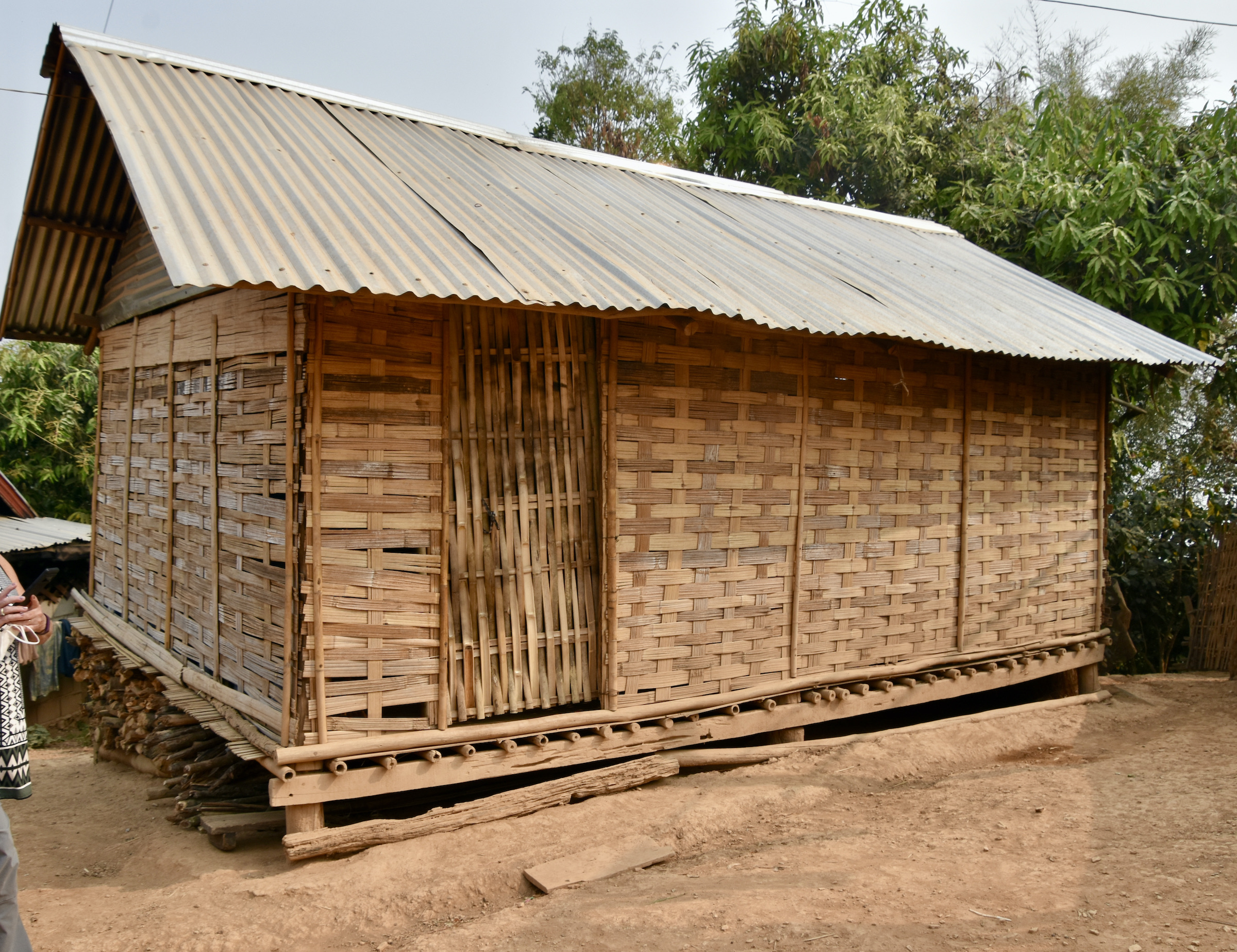
Ta directs our driver to pull into a small side street off the main highway and we get out to walk the only street in this village passing by a number of traditional bamboo houses, now with corrugated tin roofs instead of the straw that was used for millennia. Our destination is at the end of the road, a school where the children appear to be out on recess. Our presence here is causing a bit of a stir with the kids who gather in groups to initially stare down at us. They are all well dressed and well nourished.
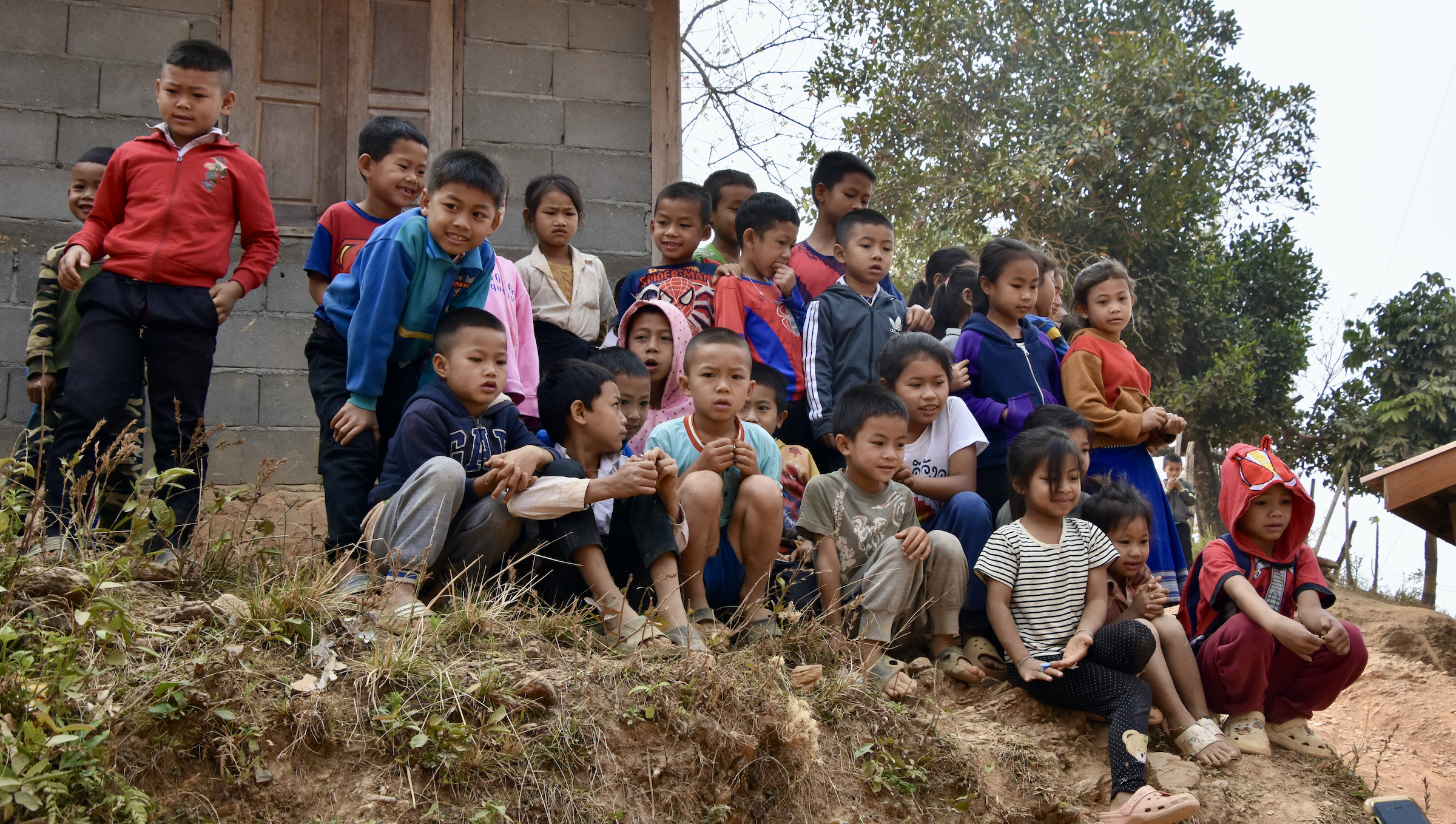
After a few minutes their reticence disappears and they gather round anyone with a camera or cell phone. Here they are posing with Alison.
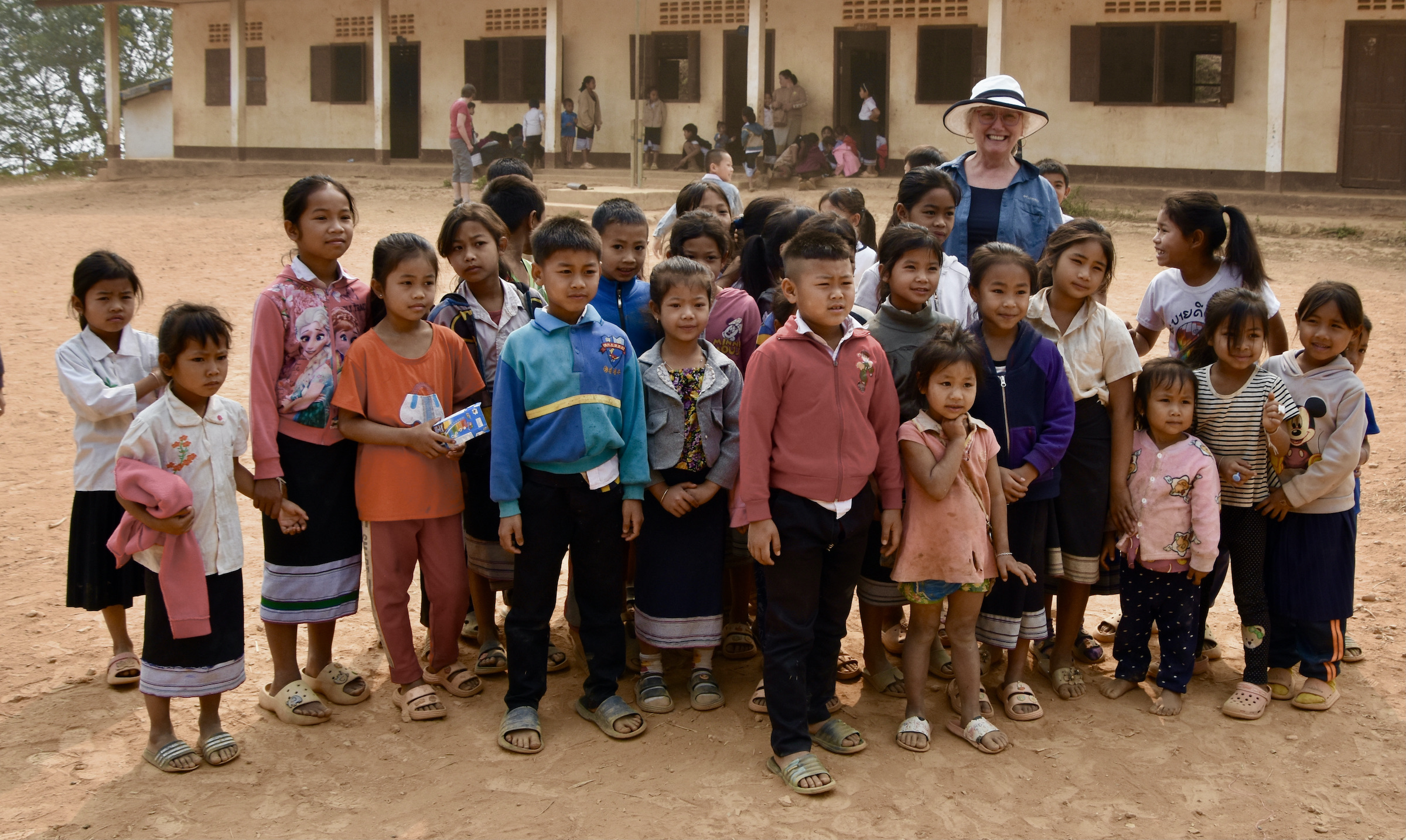
After the photos are taken they all want to get a look at them and that sets off a round of giggles and some oohs and aahs.
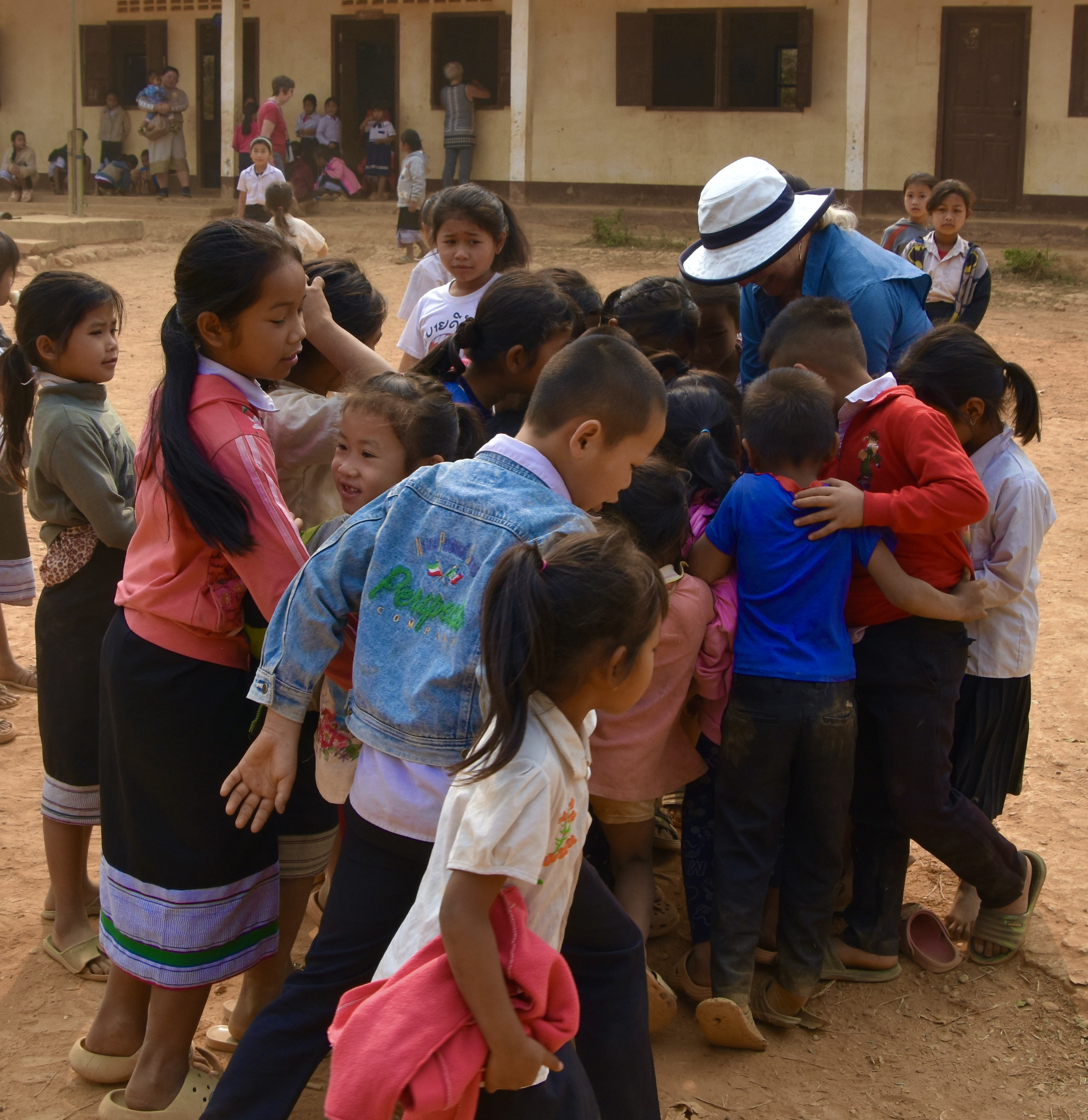
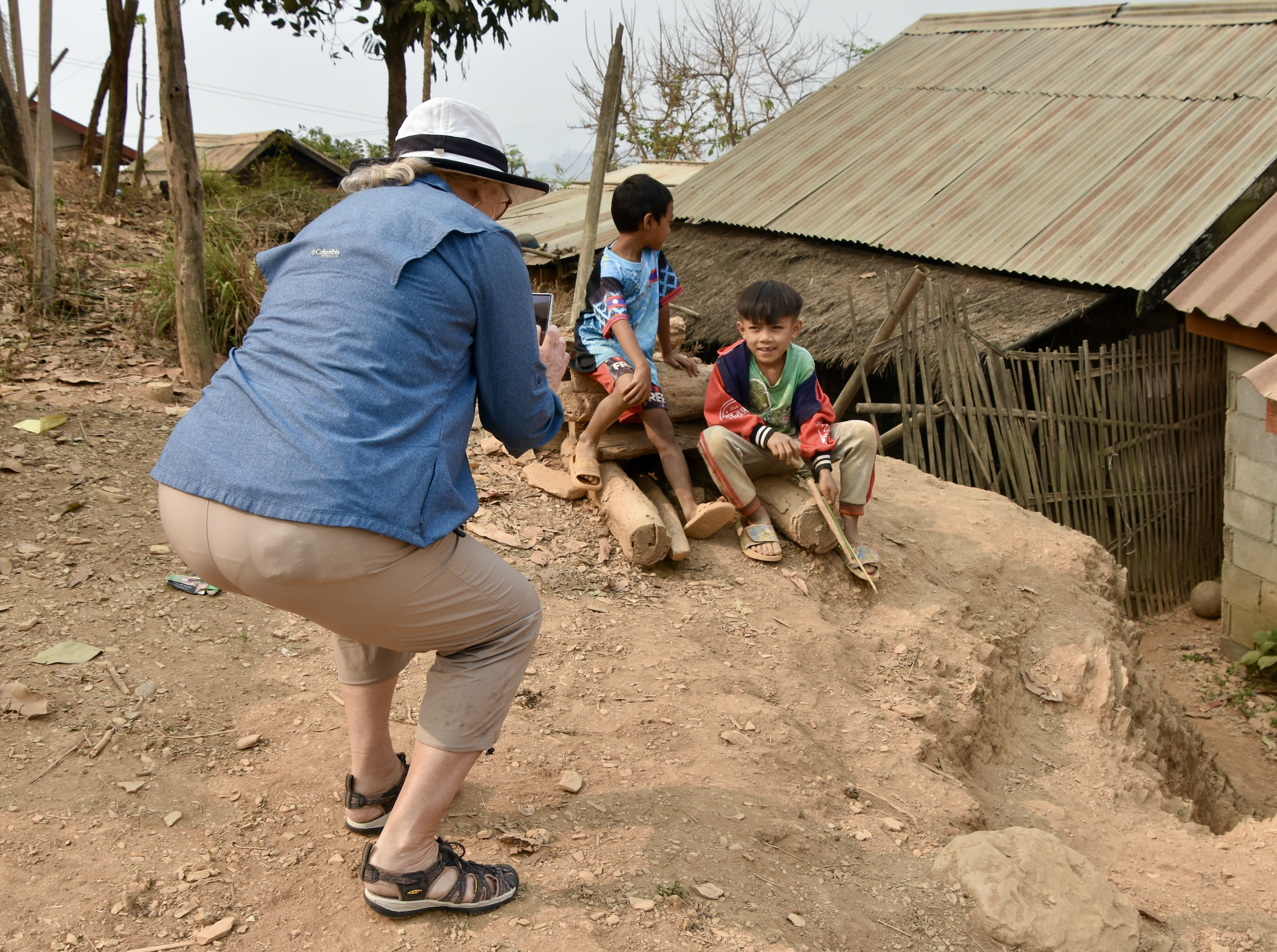
This scene of people getting individual shots of the boys and girls was repeated by many in our group including Alison. I took a peek into one of the classrooms and it wasn’t that much different than ones I’ve seen around the world. The important thing is that these children were being educated, an opportunity that still eludes far too many children on this planet.

After a while the teachers called the children back to class and we headed back to bus. Clearly this had been an exceptional recess for both them and us.
On the way back this proud father held up his young son for me to take this photo.
Although the Khmu are living what we would call a third world existence, they seemed to be pretty happy doing it and not faring too badly.
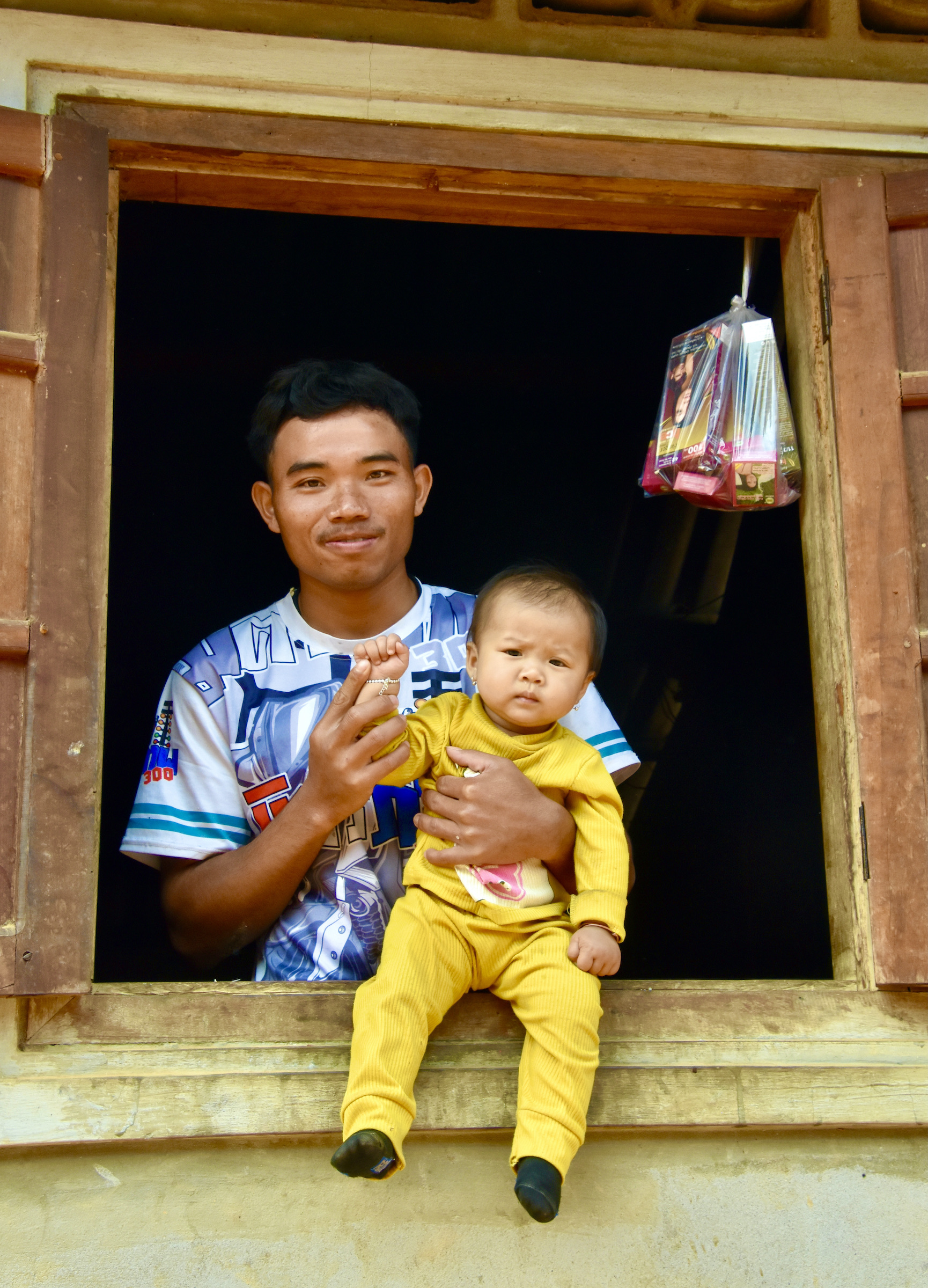
Not far after the Khmu village we reached the small town of Phou Khoun where we stopped for lunch before making the turn onto Route 7 toward Phonsavan. About an hour down this road Ta had the driver turn into another small settlement which he identified as being a Hmong village.
History of the Hmong People
The Hmong people have a history that goes back almost 4,000 years with all of it but the last two centuries entirely within China. Persecution by the dominant Han Chinese in the late 18th century resulted in over one million Hmong migrating in the early 19th century into the highlands of Vietnam, Thailand and Laos. Until fairly recently they have always been practitioners of slash and burn or as it is now more euphemistically called, ‘shifting cultivation’. Aside from growing various grain crops the Hmong were also adept opium poppy growers as well. Efforts by the governments of Laos, Vietnam and Thailand to try to end these ancient practices have only been partially successful as we can attest to on our drive today. We did pass by a few fields of opium poppies, but Ta assures us that it is a mere fraction of what it once was.
The Hmong have a tragic history associated with the Vietnam War and its counterpart in Laos. They were never treated well by the majority Lao people who viewed them largely as uninvited interlopers which is exactly what they were some seven centuries earlier. With this in mind, the CIA managed to convince their leaders and in particular one General Vang Pao, the only Hmong to achieve high rank in the Laotian military, to lead a secret army to fight the Pathet Lao and Vietcong communist forces. His small group of what was in effect a guerilla force was remarkably effective, but when the United States pulled out of the war the Hmong were left high and dry. The victorious Pathet Lao hunted them down, burned their villages and put them in reeducation camps. General Vang Pao and over 100,000 Hmong became refugees. To its credit the United States did accept them and today there are large and successful Hmong populations in California and Wisconsin. In my introductory post on Laos I strongly recommended reading Joshua Kurlantzick’s A Great Place to Have a War to get a better insight into this overlooked sidebar to the Vietnam War.
Despite the out migration, the Hmong are still the third largest ethnic group in Laos with over half a million of them, many still living in mountain villages.
The Hmong Village
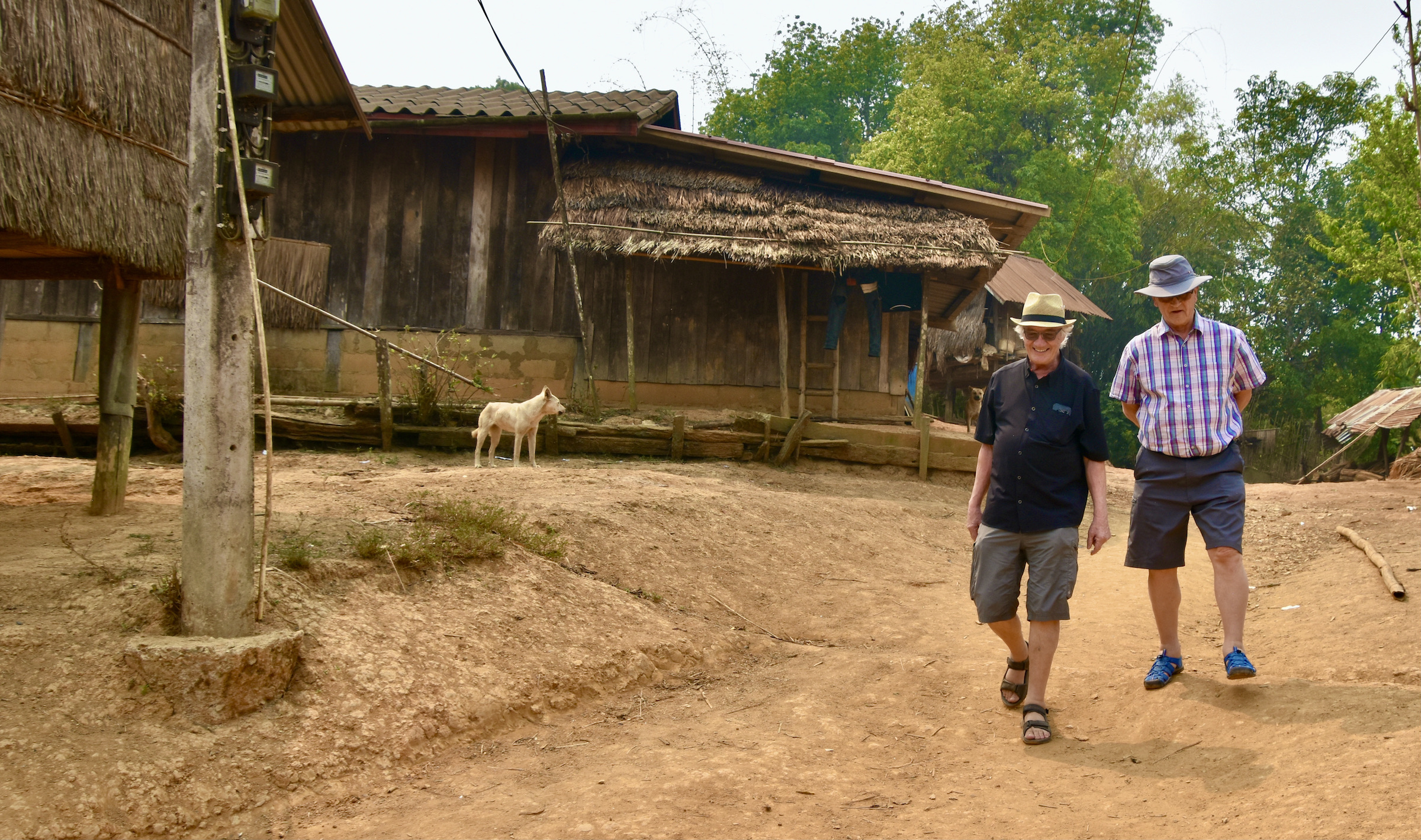
I am always a bit skeptical of these type of visits to third world settlements, leery of being a voyeuristic tourist at the expense of the people we are visiting who gain nothing from our visit other than the knowledge that we have a lot more material wealth than they do. However, in my experience AA is sensitive to these concerns and it was clear within minutes of our pulling off the main road to this dusty street you see above, that our presence was not disruptive. Unlike on our first stop in this post at the Khmu village, the Hmong seemed to go about their business almost ignoring our presence.
One thing that was immediately clear compared to the Khmu village was that this place literally fit the description ‘dirt poor’ in terms of no sanitary system, no running water and only occasional electricity. No one owned a motor vehicle, but there were a few beat up small motorcycles. There was no obvious commercial activity. and there certainly was no school. The people in this village were subsistence living – growing their own food, making their own clothes and furnishings and getting by as best they could. The Hmong live in the highest part of the northern Laos highlands with the Khmu people below them and the majority Lao in the valleys where the best land is found. They are literally at the bottom of an upside down ladder.
The houses were made of wood and straw with a few cinder block foundations. This is a communal rice storage house built well above the ground to deter rats and other rodents from getting in. Note the metal wrapped around the wooden pylons that the rats can’t climb.
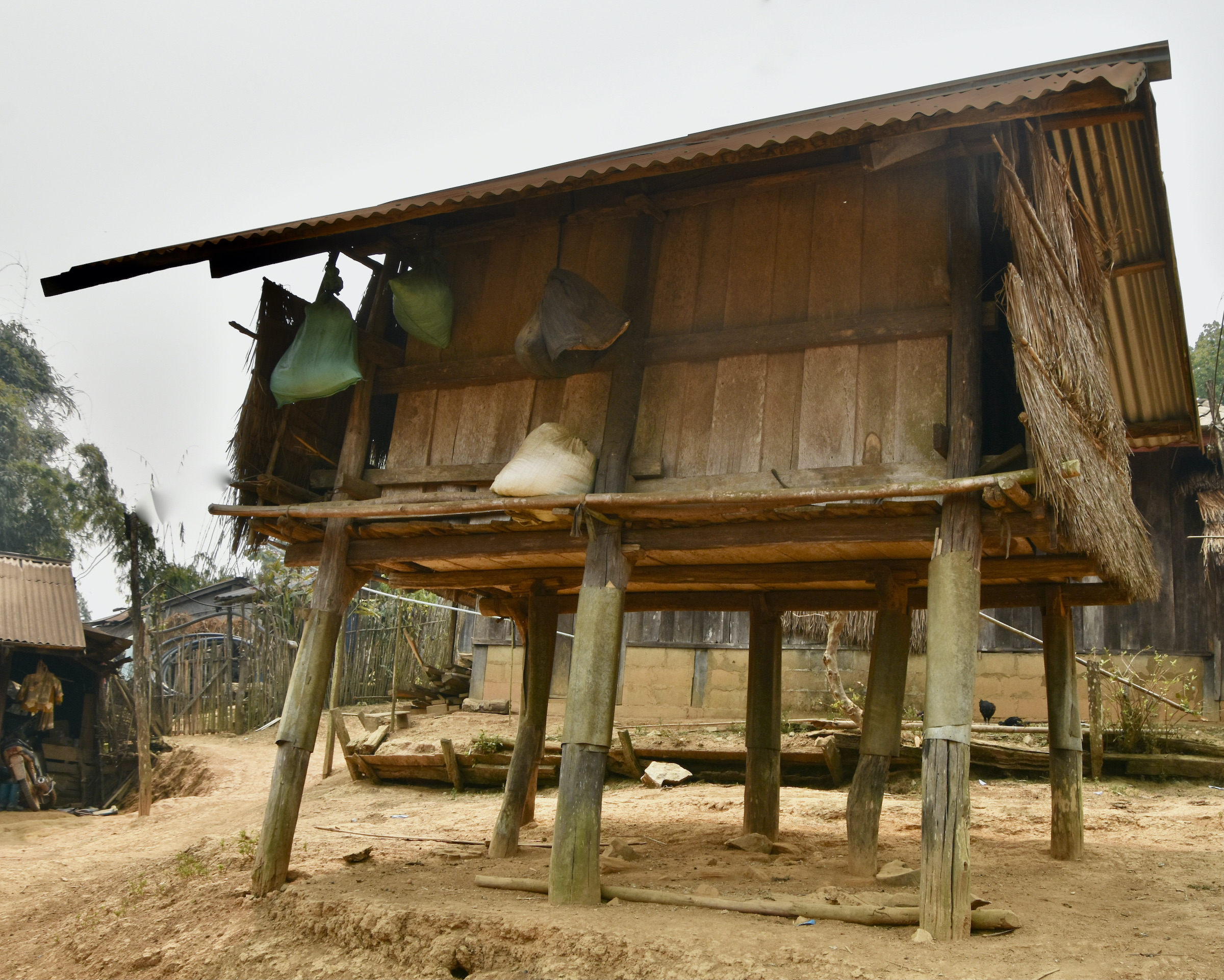
There is no way you could describe life in this village as other than very tough. There was a veritable gallery of faces upon which this was written, but also a clear sense of dignity and pride. Alison took this photo of an Hmong elder which I think is of National Geographic quality.
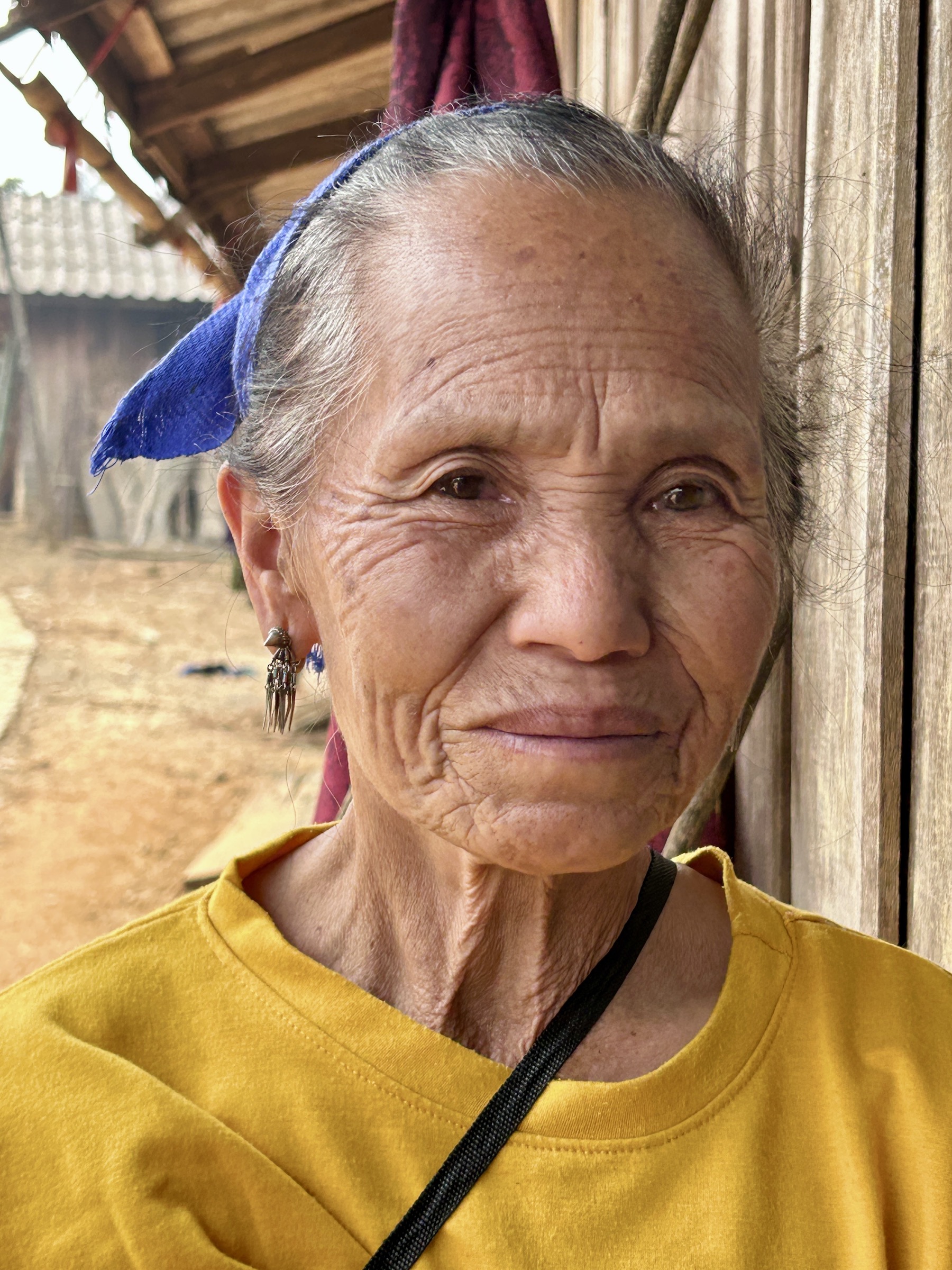
We all took photos of the Hmong going about their daily business and as I noted they did so without appearing to act any differently than if we weren’t there. Here are a few of them.
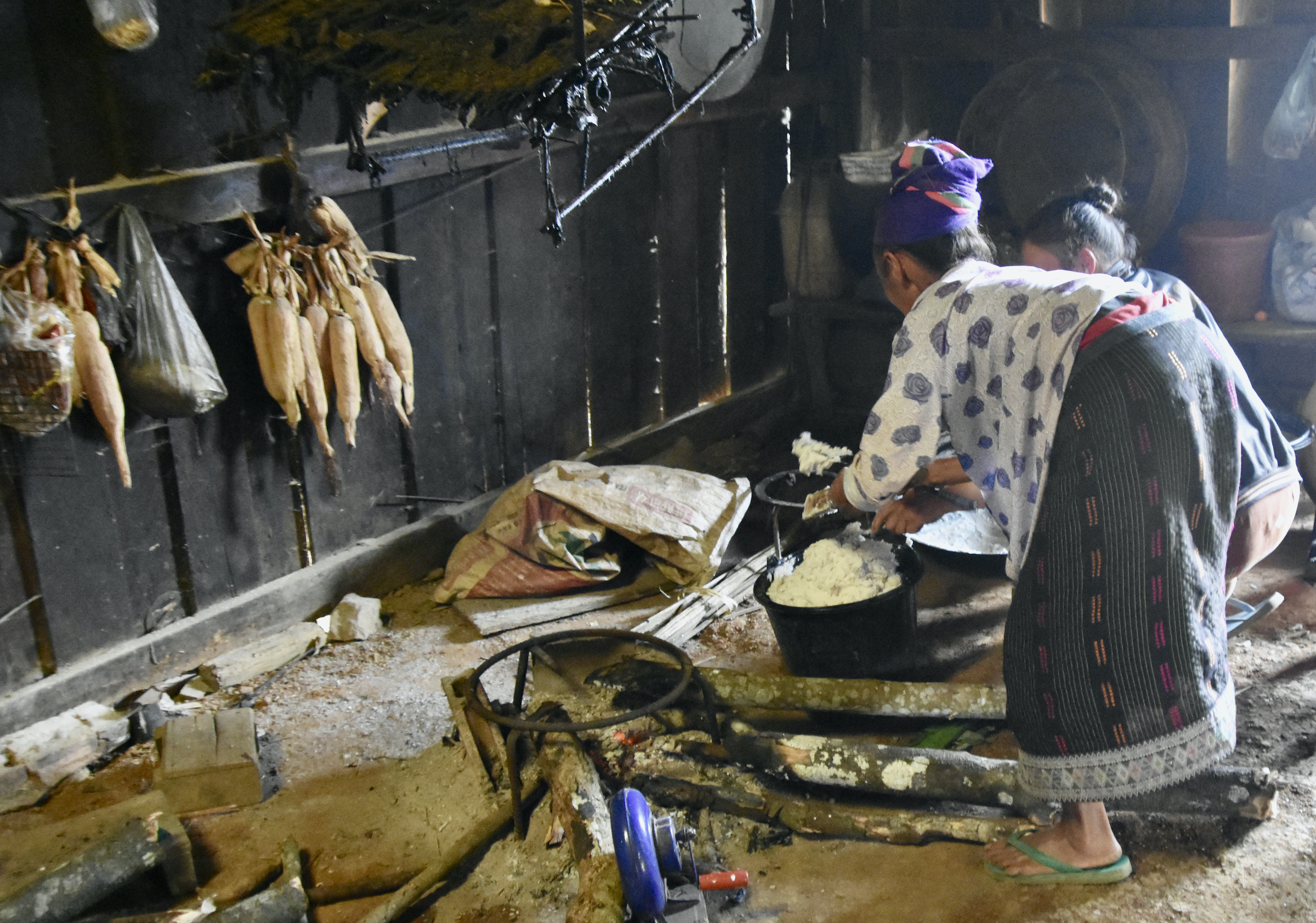
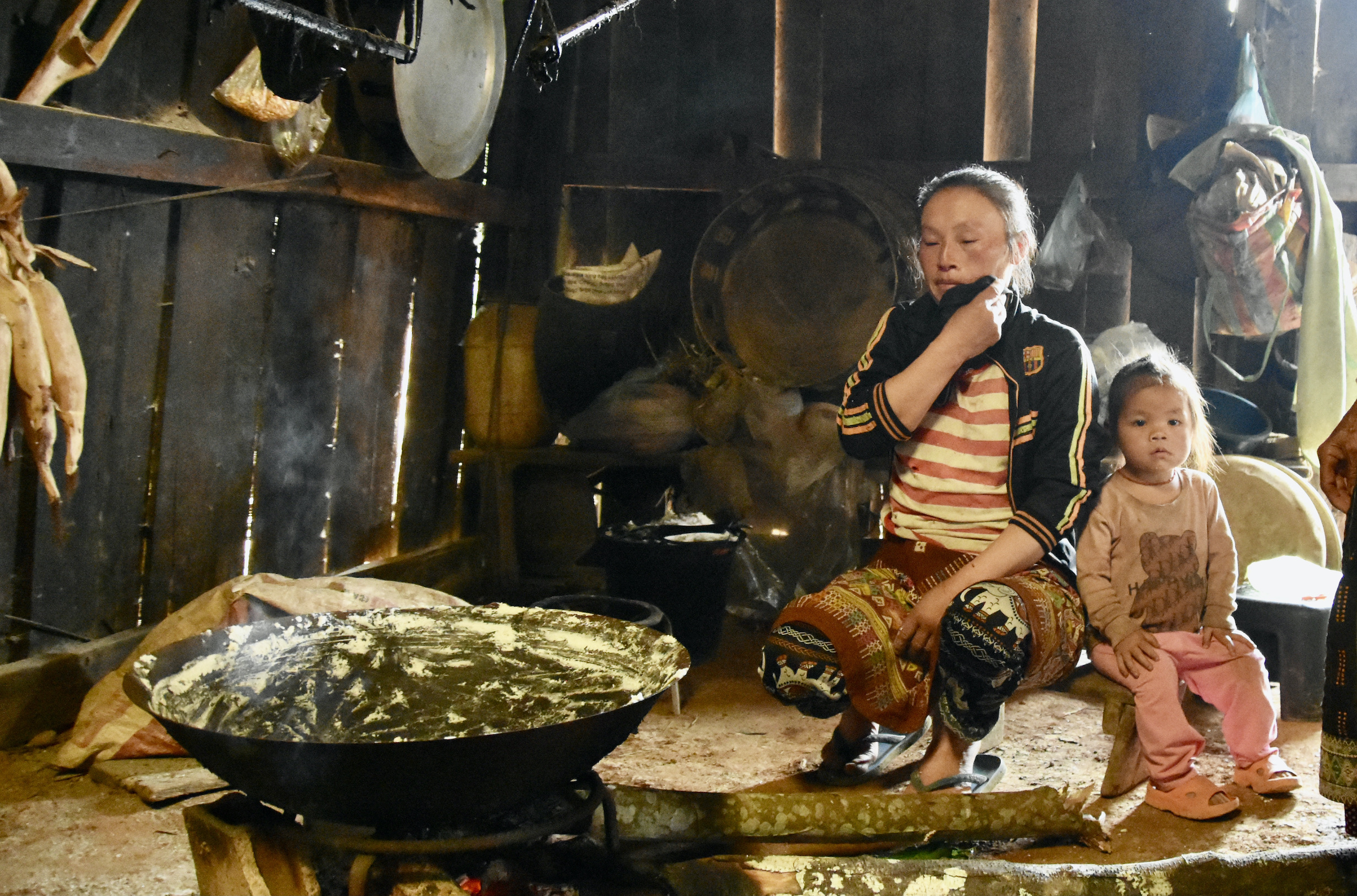
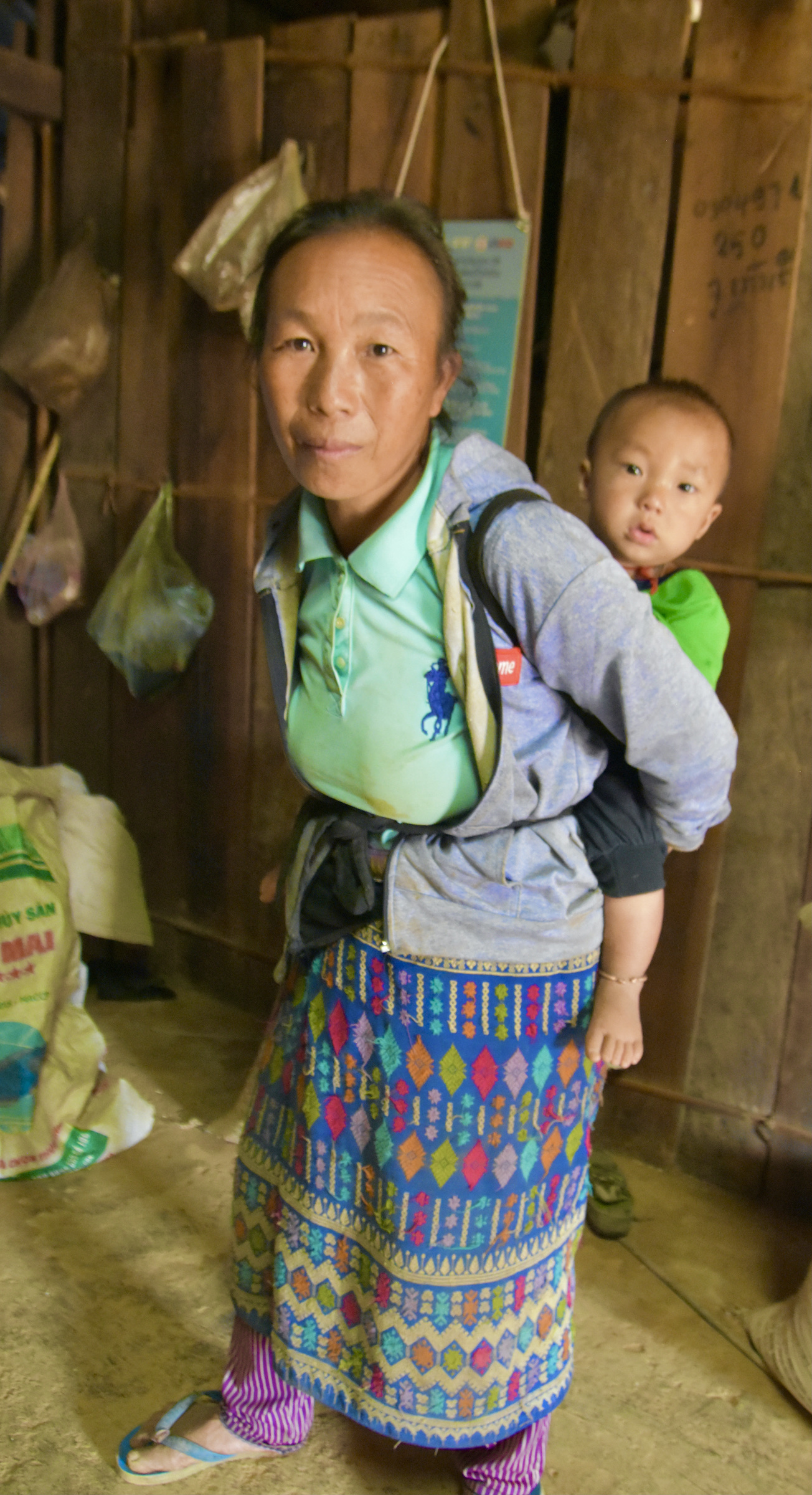
The children were quite shy.
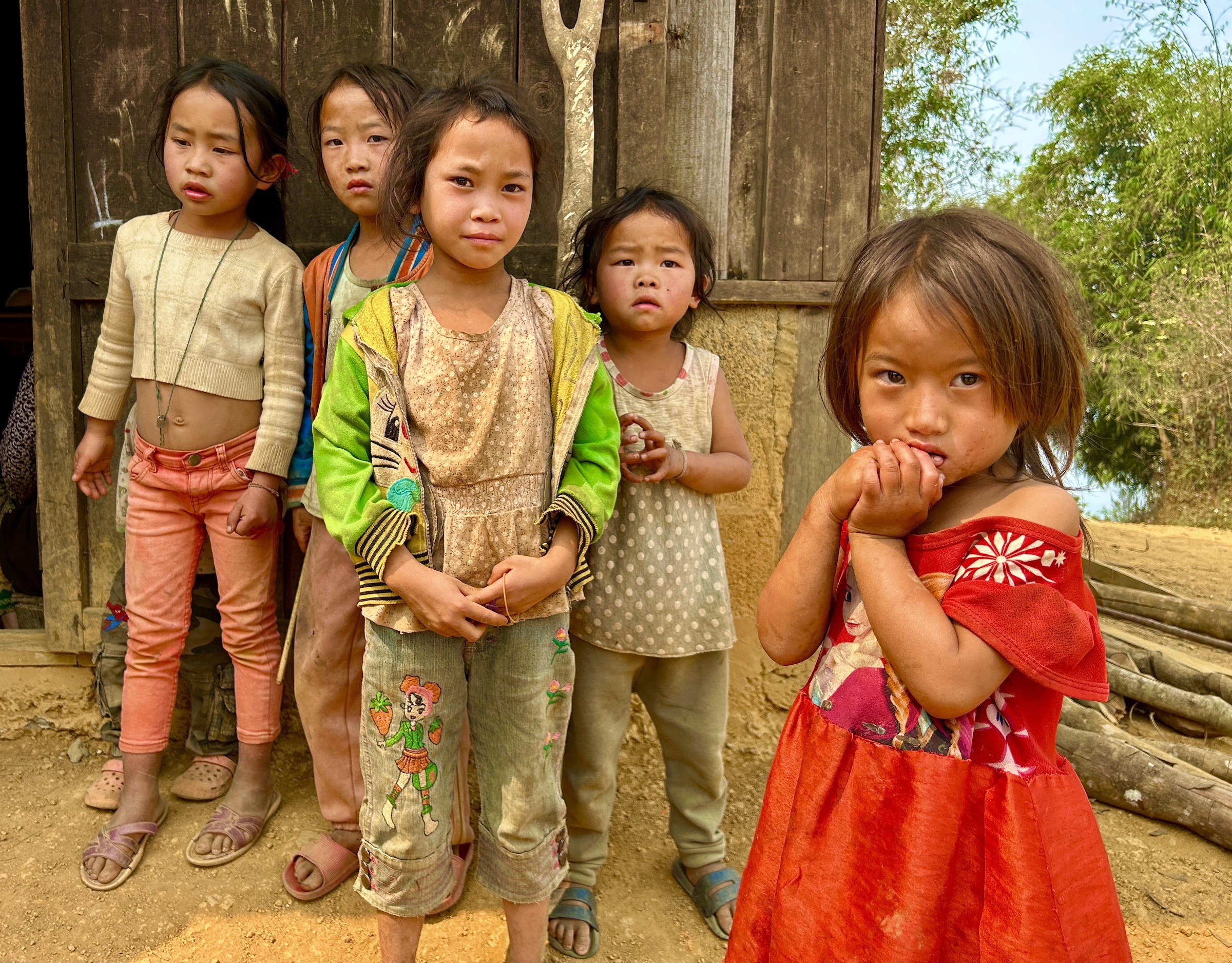
There was one exception, this smiling lady who was doing beadwork.
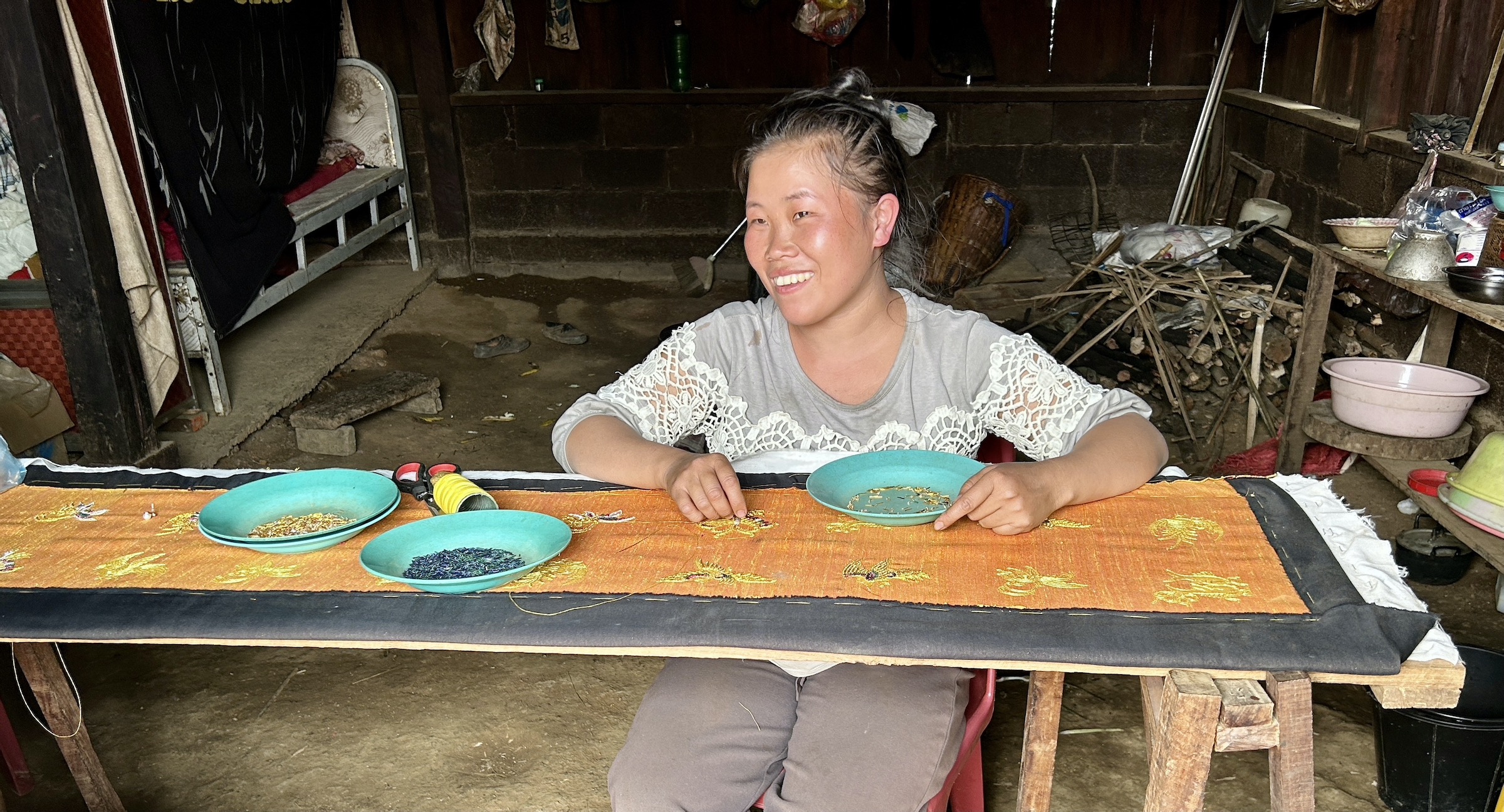
Note the absence of adult men who were all either working in the fields or at some other job.
Lastly, you can’t go to one of these village and not see dogs and especially puppies. In this village they were everywhere and attracted as many photos as the kids. I’m not going to speculate if these are just pets or a potential source of food.
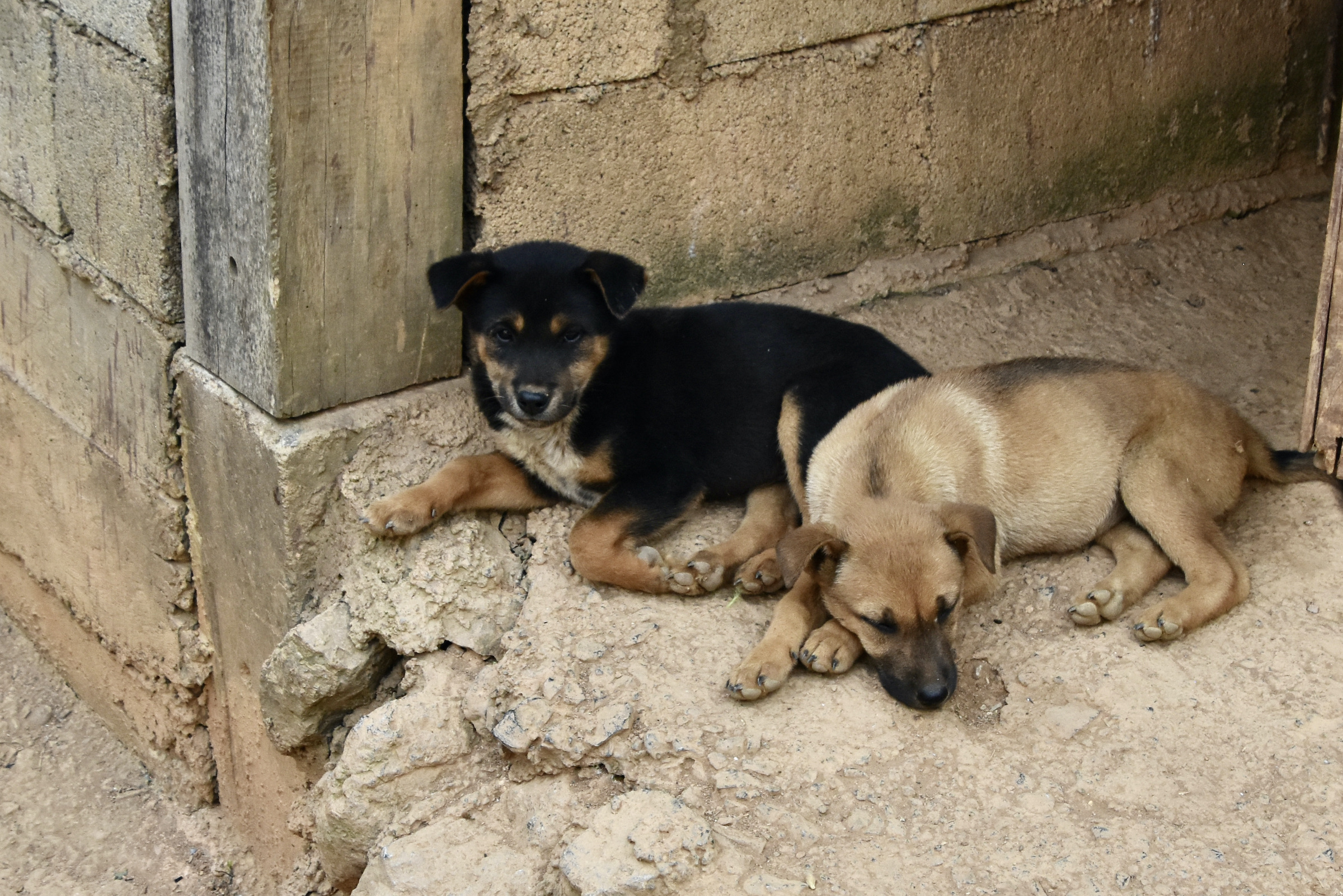
The visits to the two villages today were eye opening in two respects. The first was that the Khmu people, even though long displaced from their traditional homeland, seem to be doing okay. The second was that clearly the Hmong people were not and that the effects of the Vietnam War are still playing out on them as they are treated as less than second class citizens by the Laotian government. I thank Ta for making sure we made these stops as for me, if you really want to try to understand a place you need to see all aspects of it and not just the usual tourist attractions that bring most tourists to visit a place.
Tomorrow, we will visit perhaps Laos’ most famous tourist attraction, the Plain of Jars which actually sees very few tourists. Hope to see you there.

